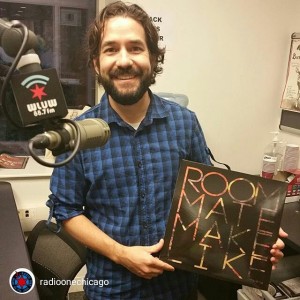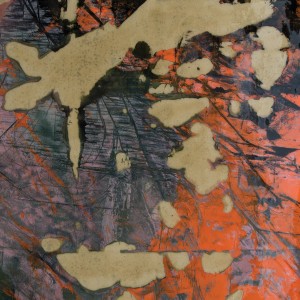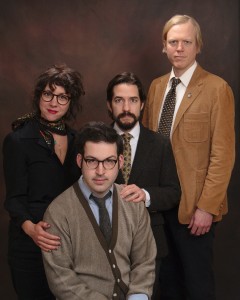Features
Here you’ll get to read interviews with Hidden Shoal artists and other folk we call our friends, see us wax lyrical about our favourite tracks, wrap your ears around artist and label curated mixtapes and a host of other things we haven’t even dreamed up yet. If you’d like to keep up to date with Featured content and can’t rely on your memory then subscribe via our RSS Feed.
Enjoy!
MAKE LIKE: An Interview with Roommate’s Kent Lambert
Chicago band Roommate, led by Kent Lambert, came to our attention in the second half of 2015 thanks to a glowing review of their fourth album MAKE LIKE on review site Coke Machine Glow. Since then, it’s been blasted regularly in the Hidden Shoal offices, and has received an extensive review on the blog of Hidden Shoal’s Tim Clarke. After contacting Kent about the release, Tim conducted an illuminating interview with Kent via email.
TC: This year you released your fourth album as Roommate, MAKE LIKE. Listening back to your discography, there’s a clear evolution away from electronic sounds towards a more sophisticated, full-band sound. How do you feel about the album now it’s been out for a while, and how do you see it sitting in relation to the rest of your releases?
KL: I’m going to quote from my application for the Illinois Arts Council grant that helped fund the album’s release. I wrote this text almost a year ago. Keep in mind that I was trying to convince strangers to give me money, so I come off as more grandiose and less humble than I otherwise might:
“I consider the album to be a pinnacle of my own career as songwriter and music producer, and a definitive representation of the band’s transformation from intimate, lo-fi, solo affair to cohesive, creatively ambitious, organically collaborative band… More than any past Roommate album, MAKE LIKE is the result of a collaborative decision-making process, and its songs were arranged for live shows before being translated into recordings. As with past Roommate albums, I wrote all of its songs in solitude. Unlike with past Roommate albums, all of its instrumental arrangements, recording processes and mixing decisions were conducted collectively. Though this album is ultimately a collection of my songs and its production was directed and managed by me, it is a document of a band, of multiple distinct sensibilities converging and diverging to untap and maximise the songs’ emotional, sonic and kinetic potential.”
A year later, I’m going to quote from your review, it describes very well (and much more concisely) how I feel about the album: “a culmination of all that’s come before it – a distillation of an aesthetic and a refinement of purpose.”
TC: Can you tell me a bit about your songwriting process, perhaps giving a couple of examples of how some of the songs on Make Like evolved.
KL: From 2000 to 2013, I continuously wrote material that eventually became songs on various Roommate albums. Some songs came together very quickly, others existed as pieces and parts, phrases and ideas, for months or even years before they cohered into a complete song. The process was basically me carrying these parts around, in notebooks or in my head, and filtering the stimuli of my daily life into parts that might lock together with pre-existing parts. For example, the line “lodgepoles are all getting eaten alive” in ‘RIOT SIZE’ was something my dad said on a camping trip in 2008 (he was pointing at and describing swaths of forest that had been destroyed by mountain pine beetles). I kept that little piece in my head, along with something about a tiger, and then in 2011, in the midst of the Arab Spring and protests in Wisconsin over collective bargaining, the rest of that song came together within a few weeks, and those little lodgepole and tiger puzzle pieces found their place. By the time I wrote ‘PEOPLE ON SCREENS’ in January 2013, the rest of what would become MAKE LIKE had already been written, and I had a pretty good idea of how it would be sequenced, and of some of its overarching themes. I felt like there needed to be one more song. So I wrote most of ‘PEOPLE ON SCREENS’ in one sitting. I think it came together so quickly because it had all of these other songs to support and inform it.
TC: Your current line-up includes some pretty stellar players who also play in other Chicago bands. Do you have a clear idea of what you want the band to contribute to your songs, or do you let them create their own parts independently?
KL: It can vary from song to song, but our album arrangements are typically a mixture of parts I’ve come up with and parts that the other players figure out independently, or together as a band in rehearsals and recording sessions. The typical process is that I write the song and record a demo of it on my own, so that my bandmates can learn the song before we get together to arrange it for live shows. The demo will have placeholder drum, bass, synth and vocal parts, basically whatever comes to mind as I quickly try to sketch the song out. I am usually not attached to those parts and encourage my bandmates to replace them with new stuff, but in many cases they get very attached to the demos and sculpt their parts from those placeholder arrangements. On past albums, the demos would typically form the skeletons of the songs’ album versions, with my bandmates and I recording new parts around them (e.g. ‘MY BAD’ and ‘AUGUST SONG’ on Guilty Rainbow), but with MAKE LIKE, we arranged and played the songs live for a while before we worked on them in the studio. In the case of ‘OLD GOLDEN,’ the album arrangement is quite different from the original demo – that song evolved considerably through multiple live arrangements before settling into its album form. By contrast, ‘DANCER HOWL’ is much closer to the demo. The guitar figure that repeats through the verses and early ‘choruses’ is directly taken from the demo (although of course Sam fleshed it out with gorgeous tone and articulation) and we flew in the electronic drum parts from the demo and processed them through outboard gear.
TC: I find your lyrics and vocal delivery to be incredibly affecting. You manage to strike a difficult balance between the specific and the universal. I’m never exactly certain of what you’re singing about, but I understand what you mean – if that makes sense! At what point in the songwriting process do the lyrics take shape, and do you feel there are certain themes or ideas that recur in your songs?
KL: It’s extremely gratifying to get that feedback! What you say makes perfect sense to me, and though I’ve never articulated it that way, I’d say that striking that balance (between the specific and the universal, between cerebral ambiguity and emotional clarity) has been an underlying goal of my songs in recent years. I’m not interested in or comfortable with writing literal, confessional songs, but I’m also not interested in escaping into a fantasy or musical genre-fetish persona… I suppose I write songs as some kind of self-therapy. I meditate on my personal world and the social communities around it – my own creative communities, the city of Chicago, and beyond. The lyrics pretty much always come first. I might have some chord fragments or keyboard riffs floating around, waiting for lyrics to bond with, but it’s the lyrics that drive the process and turn the fragments into songs. I try not to analyse my own songs too intensely, I leave that to people like you, but yes, there are definitely themes and ideas that recur. My songs tend to come directly out of my anxieties, and those anxieties certainly have recurring themes. A prominent theme would be my anxiety with my own tremendous, ridiculous privilege as a comfortably employed white American man in the 21st century. I feel a burning itch to reckon with that privilege, to scratch at it, question it and atone for it somehow, I suppose. Other themes that I consciously reflected on while writing MAKE LIKE involved the kind of identity slippage facilitated by social media and immersive video games, the ease with which we can ‘connect’ with childhood friends, casual acquaintances and strangers through status updates and 3D avatars in violent virtual spaces, the beauty and horror that can live on the surface of those experiences, and the loneliness that often lies at their core… Or something like that?
TC: The production on MAKE LIKE is incredibly deep and rich. Can you talk about your relationship with Nick Broste and how you approached production on the album?
KL: We’d all known Nick for many years (he’s been a ubiquitous presence in Chicago’s music scene doing live sound and as a trombonist in Mucca Pazza and many other groups) but we’d never recorded with him. In 2012 we played a couple of shows at The Hideout for which he was running sound. We were very pleased with our stage mix and the feedback we got on how it sounded in the room. After one of those shows he told me that during ‘SECRET CLAW’ (a very new song at that point) he’d gotten very creative with the live mix, turning certain elements up and down and manipulating effects at various points in the song, and he sort of pitched the idea of helping us record a new album. We’d always self-produced with the incredible help of our good friend Gerard Barreto, but for a fourth album I was open to changing up the equation. I’d been fortunate enough to accumulate some complimentary recording days at John McEntire’s now-private SOMA Electronic Music Studios (my grandmother’s Mason & Hamlin piano was housed there for a couple of years), so Nick and I made some plans to do a bunch of tracking there. I think Nick was accustomed to a more straightforward recording process, wherein a band more or less documents their live show in the studio, followed by overdubs and mixing. We did a version of that by tracking basic rhythm section parts first, but for us, tracking and mixing are intertwined throughout the entire production process. Our process relies heavily on intuition, experimentation, trial and error – we’d listen to the evolving mixes to try to divine what else needed to be added. Once Nick got used to this process, he dove in headfirst and became a sort of mad sorcerer mastermind. He’d conduct all sorts of experiments with various outboard gear at SOMA (while talking to himself in various Spinal Tap-esque characters), he’d send tracks to tape or through his Memory Man pedal, he’d come up with counter-melodies (the Stereolab-like Farfisa part on ‘OLD GOLDEN’ was his creation) and strange textures… he basically became another member of the band. There were countless hours of tracking and mixing that just involved Nick and me.
TC: MAKE LIKE was mastered by Rashad Becker, who’s pretty legendary among those in the know, and who seems to have an exhaustive understanding of audio. How did you come to work with him? Have there been albums he’s worked on that you admire? What do you feel he brought to the album’s final incarnation?
KL: I don’t tend to pay too much attention to the technical personnel on albums I love, I typically just let my friends and collaborators educate me on such details. So I hadn’t heard of Rashad Becker until a conversation with my friend Cooper Battersby (he’s in CAVE and Bitchin’ Bajas and is an accomplished sound engineer and producer in his own right) when MAKE LIKE’s final mixes were on the horizon. Nick and I were a bit concerned with the robustness and density of the low-end in our mixes. Cooper was thrilled with Rashad’s work mastering CAVE’s album Threace, and he was confident that Rashad’s work on so many incredible bass-heavy electronic music records more than qualified him to help preserve the clarity of our mixes. I looked him up and realised he’d mastered many, many albums I listened to heavily in the aughts (e.g. Lali Puna’s Tridecoder and Scary World Theory, Morr Music’s Blue Skied An’ Clear complilation) and more recently (Fennesz’s Becs and Pantha Du Prince’s Black Noise), so I was determined to work with him, or at least to have someone at Dubplates & Mastering do the job. I think he did exactly what Cooper said he would – he applied a light but firm hand to the mixes, preserving and gently enhancing their clarity and dynamics. He kept the bass-y elements from becoming the muddy over-compressed mess that could have resulted from other engineers and facilities.
TC: When I first got in touch with you and asked about whether MAKE LIKE was going to be released on CD, this sparked a conversation about how frustrating it can be to continue making music when recouping costs has become close to impossible. How big a part does Roommate play in your life, and how do you see that changing in the future?
KL: I’ve worked various part-time and full-time jobs in the 15 years that Roommate has been a thing, and I’ve been active as an experimental videomaker, and played in other bands (the most recent and active of them being The Father Costume), so Roommate is one of many projects I’ve juggled in that time. But in terms of the sort of psychological/emotional/psychic presence it’s held in my life, it’s often felt like the central activity of my life, and there have been sustained periods of months during which it has more or less been a second full-time job, particularly during album production, mixing/mastering, release and touring cycles. I stopped writing new material after ‘PEOPLE ON SCREENS,’ I think I wanted those cycles to stop, at least for a while. I wanted a clean break – a break from new material to obsess over, from the costs and logistical headaches of studio recording, from the infinite decisions and minutiae involved in recording, mixing and mastering, and especially from the label/publicist/promotion/business side of it. I didn’t and don’t want to end the band, but I did make a conscious choice to stop participating in the traditional (and seemingly outmoded?) album release model that we and so many of our peers have used for years. That doesn’t mean I won’t record music again, but I am definitely not generating songs the way I did for so many continuous years.
So I really don’t know what role Roommate will play in my life in the future, but I’m keeping an open mind about it. In June we had a residency at our favorite Chicago venue The Hideout, which entailed a different show every week for five weeks, with different musicians and songs in each installment, and in the lead up to and during that residency, Roommate felt like two or three full-time jobs. But it was an intensely rewarding experience. It made old songs feel new again, and it involved so many different collaborators: the four-piece at the core of MAKE LIKE, numerous ‘alumni’ from past incarnations of the band, and a few incredible musicians with whom I’d never performed before. There was a program of music videos (including an interactive art-game by Thorne Brandt that will presumably be made public in 2016), a live score to 16mm films performed by Sam Wagster and me, and chamber ensemble versions of a few songs. I came out of the experience with a renewed confidence in the depth of the catalogue, and in the potential for the project to continue to mutate and reincarnate, even if there are no more proper albums for a while, or ever.
TC: As far as I’m concerned, 2015 has been an absolutely stellar year for music – including outstanding releases by Jenny Hval, Jim O’Rourke and Björk to name a few – with Roommate’s MAKE LIKE as my favourite of them all. Which records have you held close this past year?
KL: It’s amazing to me that our record would be in the company of, let alone top, those records you mentioned! It does really seem to have been a stellar year for music. I find it difficult to keep up with and fully appreciate music during its initial release cycle. For example, I listened to Dirty Projectors’ Swing Lo Magellan in 2012–13, but it wasn’t until this past summer that I really, really got into it, and 2015 was also the second year in a row that I listened to MGMT’s 2010 album Congratulations semi-obsessively… But that said, in 2015 I spent much time with and got a great deal out of the latest albums by D’Angelo, Holly Herndon, Joanna Newsom, Kendrick Lamar, Julia Holter, Dungen, Sufjan Stevens and Flying Saucer Attack, as well as the Björk and Jim O’Rourke records you mentioned (Jenny Hval is on my radar but I haven’t dug into her music yet) and an amazing work from a large ensemble called Never Enough Hope (it includes Nick Broste and a couple other Roommate alumni, Amy Cimini and Erica Dicker). The composer and leader of the group is Toby Summerfield and the album is called The Gravity of Our Commitment. It’s phenomenal.
TC: And finally, what’s with the digital handclap sound that keeps cropping up in MAKE LIKE?!
KL: I don’t know, we got a Yamaha drum-pad at some point during the production of the album, and a couple of its clap samples became as crucial to us as a shaker or tambourine. I definitely felt a craving for sort of ’80s science fiction movie atmospheres and textures to be strongly represented on this record, and the handclap sort of encapsulated the fulfillment of that craving, particularly at the ending of ‘WILDERNESS.’ A digital clap through some precisely calibrated delay effects, at particular subdivisions of the beat, is an exquisite thing!
Hidden Shoal would like to thank Kent for taking the time to chat with us. Roommate’s MAKE LIKE is available on vinyl, cassette and digital download via Strange Weather Records and Bandcamp.
“Long Range Transmissions” MixTape Edition
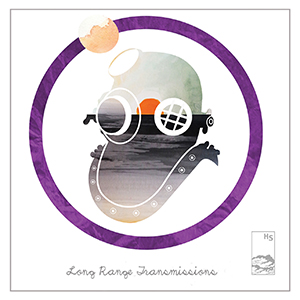 Here we present the MixTape version of Long Range Transmissions, the first in a new series of themed compilations from Hidden Shoal. The album showcases the ambient and neo-classical side of the catalogue, bringing together beautiful tracks from artists as diverse as Robert Pollard collaborator Todd Tobias, British chamber-pop songwriter Chloe March, and American ambient nostalgist Slow Dancing Society. From the delicate piano of Antonymes, Kryshe, Gilded and Medard Fischer, and the celestial experimentalism of Elisa Luu, Markus Mehr and Cheekbone, to the expansive guitarscapes of My Majestic Star, Erik Nilsson and Sleeping Me, Long Range Transmissions is an essential introduction to just one of the many facets of the Hidden Shoal label and licensing catalogue.
Here we present the MixTape version of Long Range Transmissions, the first in a new series of themed compilations from Hidden Shoal. The album showcases the ambient and neo-classical side of the catalogue, bringing together beautiful tracks from artists as diverse as Robert Pollard collaborator Todd Tobias, British chamber-pop songwriter Chloe March, and American ambient nostalgist Slow Dancing Society. From the delicate piano of Antonymes, Kryshe, Gilded and Medard Fischer, and the celestial experimentalism of Elisa Luu, Markus Mehr and Cheekbone, to the expansive guitarscapes of My Majestic Star, Erik Nilsson and Sleeping Me, Long Range Transmissions is an essential introduction to just one of the many facets of the Hidden Shoal label and licensing catalogue.
Long Range Transmissions is also available as a free downloadable album via BandCamp.
“Long Range Transmissions” – A Hidden Shoal Compilation by Hidden Shoal on Mixcloud
“Music is Color for Life” A Battlestations Mixtape
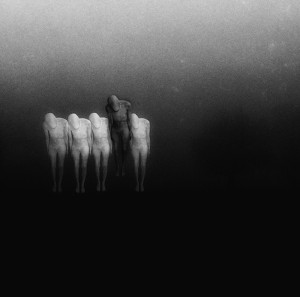 Taking some time out after the release of their sublime new album The Extent of Damage, Battlestations sat down and crafted a delicious mixtape for our collective delectation. Not as dark as one might expect but every bit melodic, the mix moves from the likes of Craig Armstrong and New Order to Ulver and Goblin to name but a few. Here’s some thoughts from Battlestations to get you in the mood,
Taking some time out after the release of their sublime new album The Extent of Damage, Battlestations sat down and crafted a delicious mixtape for our collective delectation. Not as dark as one might expect but every bit melodic, the mix moves from the likes of Craig Armstrong and New Order to Ulver and Goblin to name but a few. Here’s some thoughts from Battlestations to get you in the mood,
“Music is color for life. Like a painting, it’s sometimes big, brutal brush strokes that leaves a thick black stain in the soul, at other times feather-light, embracing and soothing tiny pecks of color melting within the soul. In either case, magic. Let these sound canvasses paint your soul.” – Battlestations
“Music is Color for Life” A Mixtape by Battlestations by Hidden Shoal on Mixcloud
Sonic Transmutation: An Interview with Markus Mehr
Sonic Transmutation: Markus Mehr, the Modular Orchestra and the Chamber Choir of Augsburg University perform ‘Gymnasium/Swarms’
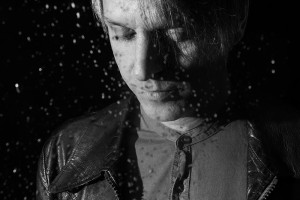 As one of the shining gems in the Hidden Shoal catalogue, Markus Mehr isn’t just a musician – he’s a sound collector, an arranger, an audio artist, a field recordist and a master of aural assemblage. In June, Mehr performed at the Modular Festival in his home town of Augsburg, Bavaria. But this was no usual Markus Mehr performance. Along with his regular collaborator, video artist Stefanie Sixt, Mehr was joined by the Chamber Choir of Augsburg University, the Modular Orchestra, and conductor Michael Kamm in a performance of ‘Gymnasium/Swarms’ from Binary Rooms. It was the first time Mehr’s music had been given the orchestral treatment, as his inorganic sounds, field recordings and heavily effected synths were rendered acoustic by a cast of dozens of musicians before a crowd of 2,000. Mehr spoke with Matthew Tomich about this highly unusual collaboration.
As one of the shining gems in the Hidden Shoal catalogue, Markus Mehr isn’t just a musician – he’s a sound collector, an arranger, an audio artist, a field recordist and a master of aural assemblage. In June, Mehr performed at the Modular Festival in his home town of Augsburg, Bavaria. But this was no usual Markus Mehr performance. Along with his regular collaborator, video artist Stefanie Sixt, Mehr was joined by the Chamber Choir of Augsburg University, the Modular Orchestra, and conductor Michael Kamm in a performance of ‘Gymnasium/Swarms’ from Binary Rooms. It was the first time Mehr’s music had been given the orchestral treatment, as his inorganic sounds, field recordings and heavily effected synths were rendered acoustic by a cast of dozens of musicians before a crowd of 2,000. Mehr spoke with Matthew Tomich about this highly unusual collaboration.
MT: How did this performance of ‘Gymnasium/Swarms’ come about?
MM: Back in 2008, I was working for Modular Festival in Augsburg. I was hired as a creative director or ideas person, or something like that, and my job was to create ideas and collect ideas from other people and bring in projects and art across all kinds of disciplines – not just music. All the projects lead to this new festival and we thought it would be great to connect the local music scene with the classical music scene, the pop music scene with the classical music scene. This is not new, but unless you’re Metallica, it’s impossible, as a local musician or as a starter, to play with an orchestra, so I thought it would be a great idea. And it needn’t be that typical Night of the Proms thing – do you have this in Australia, do you know what I mean?
MT: No, I’m not sure what you mean.
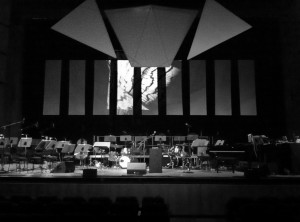 MM: We have this in Europe and it’s very successful, where a bunch of aged stars from the ’80s sing their songs with a musical accompaniment embedded in an orchestral context. They fill stadiums here with this boring shit. We didn’t want this project to be like that – the songs from the bands should be cut into pieces and put together in a completely new way. It should be very unusual and new. The difficult thing was to find local conductors and writers who can deliver that, but it was successful. I had two guys at the time, both of whom had one foot in the pop context and the other in the classical context, and one of them – Michael Kamm – was also the arranger of ‘Gymnasium/Swarms’. We started out in 2008 with this and called it ‘Puppet on a String’. And it was successful – very successful – and the ‘Puppet on a String’ project is still the opener of the Modular Festival. It’s become bigger and bigger over the years, and we played this year in front of 2,000 people – so that’s a great thing. The end of the story is that I only worked for them for two years, then I left it, and this year they asked me to play with them – as a kind of homage if you like, or because they love the album, I don’t know! And I thought it was a cool idea from the beginning, because it was my idea [laughs]! So it was a unique opportunity to do this stuff, and it’s obviously a fantastic thing to stand in front of a choir of 40 people and to stand in front of this orchestra – it sounds beautiful. So that’s the whole story. I invented this event because it was my job somehow, and I saw it growing, and this year they asked me, and I said yes.
MM: We have this in Europe and it’s very successful, where a bunch of aged stars from the ’80s sing their songs with a musical accompaniment embedded in an orchestral context. They fill stadiums here with this boring shit. We didn’t want this project to be like that – the songs from the bands should be cut into pieces and put together in a completely new way. It should be very unusual and new. The difficult thing was to find local conductors and writers who can deliver that, but it was successful. I had two guys at the time, both of whom had one foot in the pop context and the other in the classical context, and one of them – Michael Kamm – was also the arranger of ‘Gymnasium/Swarms’. We started out in 2008 with this and called it ‘Puppet on a String’. And it was successful – very successful – and the ‘Puppet on a String’ project is still the opener of the Modular Festival. It’s become bigger and bigger over the years, and we played this year in front of 2,000 people – so that’s a great thing. The end of the story is that I only worked for them for two years, then I left it, and this year they asked me to play with them – as a kind of homage if you like, or because they love the album, I don’t know! And I thought it was a cool idea from the beginning, because it was my idea [laughs]! So it was a unique opportunity to do this stuff, and it’s obviously a fantastic thing to stand in front of a choir of 40 people and to stand in front of this orchestra – it sounds beautiful. So that’s the whole story. I invented this event because it was my job somehow, and I saw it growing, and this year they asked me, and I said yes.
MT: You mentioned that these arrangers and composers had one foot in pop music and one foot in classical music, but you’re neither of those things – you’re electronic music. Was that a weird area for them to negotiate?
MM: I guess that was one of the reasons why they asked me – the challenge – and why I asked Michael Kamm to be my conductor. I think it was kind of a challenge for him as well, to write for a guy like me who’s doing strange stuff and is far out of a pop context or a song context. I guess that’s exactly what the approach was – to bring a guy that sounds like me into the project, because the other nine artists this year were singers with songs. They were heavy metal, they were songwriters – acoustic songs and stuff like that – so I was an exotic guy anyway in this whole context, and I guess they wanted to show another side of this ‘Puppet on a String’ project. I want to say: yes, it was kind of a challenge for everyone, and they wanted to bring some electronic and avant-garde kind of thing into this project.
MT: Was it a challenge for you as well? Because most of your work performed under your name is performed solo or in collaboration with Stefanie Sixt, who does your visuals. Was it strange to relinquish control of your music in that live setting to someone else?
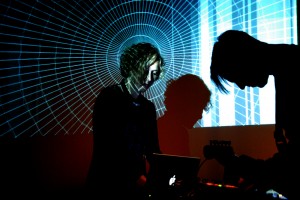 MM: It was one of the biggest things I can imagine. I was honoured and I was completely nervous about it. At the beginning I had all these questions – how can we do it? How will it turn out? Is this crap? Is it possible to do it? In a good way, I didn’t know. But from the very beginning my choice was to work together with Michael – the first guy that I’ve ever asked to do something for ‘Puppet on a String’, and also a friend of mine, so I was very close to him anyway. I knew he was a good guy and I knew he would give it the right treatment. We had a nice conversation the whole time. He was here in my studio and we had a look at the arrangement and he had the imagination for what he could do in an orchestra – this can be a part for a choir, what can you do there? – so we had a dialogue. And he had a plan right before he was starting to write down the score. We knew theoretically what each musician would do, what would be the part of the orchestra, what would be the part for me. But it was a big challenge for the orchestra as well, and for the choir, until we brought them all together on one stage. If you look at the video, you’ll see that the choir starts out with the paper thing, they do a kind of scrunching noise, so they don’t sing until minute three or four. They have to do funny things with their feet and stuff like that. So for the whole performance, the plan was to go along with this John Cage approach. My music doesn’t have measures or beats per minute.
MM: It was one of the biggest things I can imagine. I was honoured and I was completely nervous about it. At the beginning I had all these questions – how can we do it? How will it turn out? Is this crap? Is it possible to do it? In a good way, I didn’t know. But from the very beginning my choice was to work together with Michael – the first guy that I’ve ever asked to do something for ‘Puppet on a String’, and also a friend of mine, so I was very close to him anyway. I knew he was a good guy and I knew he would give it the right treatment. We had a nice conversation the whole time. He was here in my studio and we had a look at the arrangement and he had the imagination for what he could do in an orchestra – this can be a part for a choir, what can you do there? – so we had a dialogue. And he had a plan right before he was starting to write down the score. We knew theoretically what each musician would do, what would be the part of the orchestra, what would be the part for me. But it was a big challenge for the orchestra as well, and for the choir, until we brought them all together on one stage. If you look at the video, you’ll see that the choir starts out with the paper thing, they do a kind of scrunching noise, so they don’t sing until minute three or four. They have to do funny things with their feet and stuff like that. So for the whole performance, the plan was to go along with this John Cage approach. My music doesn’t have measures or beats per minute.
MT: There’s no rhythm, right?
MM: Yeah, nothing at all. And one of Michael’s great ideas was to play with clocks – no conducting. Everybody was looking at clocks. You see at the beginning these great clocks on the screen, and everybody was looking – OK, this is 1:20, now it’s my part to do this. It’s a very John Cage-y thing. It’s not possible to conduct fragments like that. It was a timetable and that’s the magic touch.
MT: Did you have much interaction with the rest of the orchestra and the choir, or was that all done through Michael?
MM: I was there for two rehearsals and I knew what they’d do, and after that, I had a conversation with Michael – oh, I don’t like this, what do you think of this – so we discussed a few things, but most of the time, Michael was the leader and communicated with all the musicians. It was very quick – we only had one rehearsal with the orchestra, the day before we performed – and I had two rehearsals with the choir, but I had nothing to do; I was just a listener. So it came together very quickly and Michael was the communicator. And on stage as well – everybody knew what to do when the time was there, so we didn’t have to look at Michael as a conductor, but you see him conducting the choir – louder, louder, stay – you see what he did with his hands. So they looked at him and he was the medium, and I had my timetable and did my thing like the other people on stage as well. I looked at the clock and played my parts when I had to.
Markus Mehr – Gymnasium/Swarms (Live with Orchestra) from Hidden Shoal on Vimeo.
MT: Last time we spoke, you talked about the duality of your work and the relationship between warm and cold, and organic and inorganic. When your samples are rendered live by an orchestra and electronic music becomes acoustic, or when the choir starts bursting into chatter to mimic the sample you have, is that the ultimate realisation of what you’re trying to do with opposites?
MM: Yes, I would say so. But it’s unusual – you spend so much time trying to find new sounds or to tweak sounds to make them sound new or different or inorganic or strange, and often the sounds came from natural instruments. You tweak knobs and then it doesn’t sound like a trumpet. And all of a sudden you stand on stage with someone playing a trombone, and he’s playing the sound again like an elephant – that’s strange. It’s the opposite of what you tend to do. It comes full circle. Believe me, it’s so strange. But it’s so much fun – I guess if we were to have this conversation five or six years ago, maybe I wouldn’t feel so comfortable with it because my direction was to move away from anything like music. That’s still the direction. But I think it has a sense of humour, or it’s more relaxed, to put it back together in wood and instruments and hear my music in a classical context. Sound-wise, it’s so impressive, if you stand on stage with an orchestra, and I’d never done that. That alone is a wonderful experience – I wouldn’t want to miss that. And everybody involved was so kind and so friendly and so ambitious to do this right for me. I have to point out that nobody in the choir knew me. Some of the musicians on stage knew me from previous projects, but everybody was so keen to make the best of the track, and what Michael did with the arrangement was a blast.
MT: Are there any plans to do something like that again? You mentioned you were collaborating with Michael on something else.
MM: A few days after, Michael and I sat in my kitchen, and we were very ambitious about putting it together again. We had some plans to do the whole album like that, but to be honest, this is not possible. You can’t put together an orchestra, you can’t hold together this choir – it takes too much time and money. And also for Michael as a conductor and as a writer – it took a few days for him to score it. It would be a dream, but I don’t think it will happen again. So, to be honest, I think this was it.
MT: What else are you working on right now? What’s coming up in the future for you?
 MM: At the moment, I’m working on a few things. When we finish this interview, I’ll go back to work on the next couple of albums. I’m working on the last two tracks for the next album, and that’s pencilled in for release in March. So I want to finish that, hopefully this week or next week. After that I’m working on another album – a new project called Low Delayer with my dear friend, Tom Hessler. It’s not completely different to my sound, but it’s quite different. I’d say we are swimming in the pool of post-techno. We’re working with modular synthesizers and my field recordings, bringing both worlds together and doing something that’s not really connected to techno in a pure form, but it has a kind of dance-y feeling. We only play with sounds and make rhythm-like things with sounds recorded from lights, light bulbs, display boards, etc. No drums. Hidden Shoal will release a remix EP from my current album in October, which I’m putting together at the moment. Along with that I’m doing some live performances on my own, and in October, Stefanie and I will play some shows with our new performance, Re-Directed, in Germany and Sweden. So, that’s happening in the coming weeks.
MM: At the moment, I’m working on a few things. When we finish this interview, I’ll go back to work on the next couple of albums. I’m working on the last two tracks for the next album, and that’s pencilled in for release in March. So I want to finish that, hopefully this week or next week. After that I’m working on another album – a new project called Low Delayer with my dear friend, Tom Hessler. It’s not completely different to my sound, but it’s quite different. I’d say we are swimming in the pool of post-techno. We’re working with modular synthesizers and my field recordings, bringing both worlds together and doing something that’s not really connected to techno in a pure form, but it has a kind of dance-y feeling. We only play with sounds and make rhythm-like things with sounds recorded from lights, light bulbs, display boards, etc. No drums. Hidden Shoal will release a remix EP from my current album in October, which I’m putting together at the moment. Along with that I’m doing some live performances on my own, and in October, Stefanie and I will play some shows with our new performance, Re-Directed, in Germany and Sweden. So, that’s happening in the coming weeks.
MT: And is Low Delayer something you’re going to do with Hidden Shoal, or something you want to do with another label?
MM: We want to finish the whole project first. I was in Berlin last week and we did three tracks, very rough. That was a three-day session and we picked three pieces from what we did, so now we can see the material clearly. We will have at least 40 minutes of music, and when it’s finished we will think about what we want to do with it. There are no other plans, but there are definitely plans to release it, that’s for sure. I’m not a guy who lets things get stale on my hard disk. I want to release it. Cam at Hidden Shoal will be one of the first to hear it.
MT: And as for the new album under your name, what can you tell us about that? How’s it sounding, how’s it different?
MM: Well, I’ve finished two different pieces. Re-Directed is one, and a second one, called Dyschronia, is finished as well. To be honest, I’m not sure which one I want to release first. That’s a luxury! Re-Directed deals with the abuse of power in connection with modern technology and communication devices. For this project I recorded tons of sound from servers, hard disks, mobile phones and stuff like that. It’s interesting how different they all sound, by the way. On Dyschronia I’ve experimented with a very different workflow. I’ve been working on that material for more than four years now. It’s about breaks in time, about leaving things alone and coming back, leaving them alone again and coming back again. It’s about sticking with things, looking at them in different ways and from new perspectives in order to observe how things – in this case, sounds – change over time. Time is a luxury in the modern world we live in. I know, musically this says nothing – you’ll have to listen to it when it’s released.
“Running Man” A MixTape by Liminal Drifter
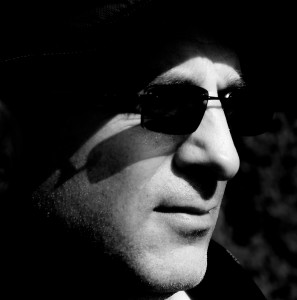 The wonderful Liminal Drifter, aka Dr Simon Order, brings us the next installment in our mixtape series. The mix, lovingly produced by Warren S, is inspired by Order’s other life as a long distance runner and includes some gorgeous ambient electronica and downtempo works. Let’s hand it over Liminal Drifter to explain further,
The wonderful Liminal Drifter, aka Dr Simon Order, brings us the next installment in our mixtape series. The mix, lovingly produced by Warren S, is inspired by Order’s other life as a long distance runner and includes some gorgeous ambient electronica and downtempo works. Let’s hand it over Liminal Drifter to explain further,
“Running Man is drawn from the long-distance running tunes of ambient electronic producer Liminal Drifter. Delicately mixed by DJ maestro Warren S, these are songs that fuel the run and relax the body, moving through space, floating on the groove, effortlessly, in movement. Songs inhabiting the wandering psyche of the runner, paths of calm, shifting melody and gentle shuffling beats. Warren S resonates the mix in sympathy, a playful and harmonically uplifting curation.” – Liminal Drifter
“Running Man” A MixTape by Liminal Drifter by Hidden Shoal on Mixcloud
“Melody Makers” A MixTape by Todd Tobias
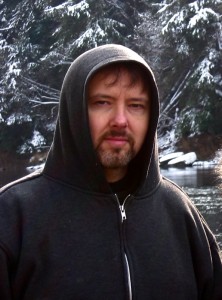 The latest installment in our mixtape series finds the wonderful Todd Tobias curating a deliciously melodic time capsule. The mix features tracks from across a 30 year period starting in the 40’s and featuring artists such as Nat Cole, Sam Cooke, Neil Young, Nick Drake, David Bowie and even some Andrew Lloyd Webber! Let’s hand it over to Todd to explain,
The latest installment in our mixtape series finds the wonderful Todd Tobias curating a deliciously melodic time capsule. The mix features tracks from across a 30 year period starting in the 40’s and featuring artists such as Nat Cole, Sam Cooke, Neil Young, Nick Drake, David Bowie and even some Andrew Lloyd Webber! Let’s hand it over to Todd to explain,
“Here is a collection of 13 melody-driven songs written in a wide time range (1947-1977). Melody is the one element I struggle with in my own music, so I have an appreciation for it as a listener. In many of these songs the writers and performers convey a melancholy mood without being cute, maudlin or sentimental – something I admire because I know it’s not easy to achieve.
Many of the artist names will be familiar, but in a few cases perhaps not the names of the songwriters or vice-versa. Where it applies, the name of the writer is included alongside the performer. Thanks to Cam at Hidden Shoal for asking me to share this mixtape.” – Todd Tobias
“Melody Makers” A MixTape by Todd Tobias by Hidden Shoal on Mixcloud
Featured Track – The Star Department ‘Stitches and Sleeves’
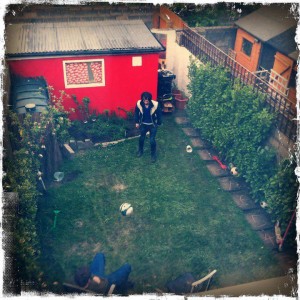 At the heart of The Star Department‘s superb debut album The Pea Green Boat lies ‘Stitches and Sleeves’. The track is bound together by a heartbreaking guitar line, a silvery waltz-time figure that sends shivers up the spine. Combined with shuffling drums, a muted yet ominous horn section, and Justin Commins vulnerable, almost defeated vocal, the song radiates melancholic pop magic.
At the heart of The Star Department‘s superb debut album The Pea Green Boat lies ‘Stitches and Sleeves’. The track is bound together by a heartbreaking guitar line, a silvery waltz-time figure that sends shivers up the spine. Combined with shuffling drums, a muted yet ominous horn section, and Justin Commins vulnerable, almost defeated vocal, the song radiates melancholic pop magic.
Three Questions With Liminal Drifter
 Dr. Simon Order, aka Liminal Drifter, wears many hats – academic, marathon runner and of course musician. Whilst it’s the latter we’re most interested in Order’s other two areas of activity inform his music in many key ways. The often wistful, open spaces of his work as Liminal Drifter feel like the perfect accompaniment to a runners high – internalised, slightly out of body and always moving forward. His debut album Troubled Mystic, featuring a number of collaborations with Chloe March, presents dreamy, evocative slices of ambient electronica sitting alongside some brooding downtempo gems. Check out the title track here ahead of the album release on the 19th of August 2015.
Dr. Simon Order, aka Liminal Drifter, wears many hats – academic, marathon runner and of course musician. Whilst it’s the latter we’re most interested in Order’s other two areas of activity inform his music in many key ways. The often wistful, open spaces of his work as Liminal Drifter feel like the perfect accompaniment to a runners high – internalised, slightly out of body and always moving forward. His debut album Troubled Mystic, featuring a number of collaborations with Chloe March, presents dreamy, evocative slices of ambient electronica sitting alongside some brooding downtempo gems. Check out the title track here ahead of the album release on the 19th of August 2015.
But that’s enough from us for now. Let’s hand it over to the good doctor as he pulls three questions out of the bag.
What kind of activity is your music made for?
Running, cycling, body action, movement in time, just breathing, washed in sonic waves, a back and forth, an up and down, a vibration, a passage of time. Time allows music. No time, no music, no movement. Resonance is all we have. I’m drawn to the resonance.
Why make music?
The human psyche; an almost unbearable number of excitable notions trying to break into the world, visceral and cerebral, stuff to be expressed and articulated. I think that’s where music comes in, tapping into that flow, reimagining, a crafting of emotions into sonic resonances that hopefully mean something to a listener. I’m drawn to that reimagining.
What’s your most treasured item of musical gear?
My bass guitar stands proudly in the corner reminding me there’s always a groove; the low, guttural, trouser-flapping power of music.
Featured Track – Hotels ‘The Heart That Hears Like A Bat’
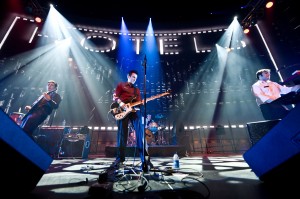 ‘The Heart That Hears Like A Bat‘ is a song as wonderful as its title, a gorgeously shadowy piece of film noir Bond pop. Tremolo guitars and vibraphone shimmer over the inimitable Hotels rhythm section like moonlight on a swimming pool, while Blake Madden intones a pulpy tale of young girls crying and young lovers dying . It s beautiful, effortlessly cool, and once again proves Hotels as kings of pop melody and mood. The track is lifted from Hotels brilliant sophomore album Where Hearts Go Broke.
‘The Heart That Hears Like A Bat‘ is a song as wonderful as its title, a gorgeously shadowy piece of film noir Bond pop. Tremolo guitars and vibraphone shimmer over the inimitable Hotels rhythm section like moonlight on a swimming pool, while Blake Madden intones a pulpy tale of young girls crying and young lovers dying . It s beautiful, effortlessly cool, and once again proves Hotels as kings of pop melody and mood. The track is lifted from Hotels brilliant sophomore album Where Hearts Go Broke.
“The Sparkling Ground” MixTape by Chloe March
We have another delicious artist curated mixtape to quench your thirsty ears. The Sparkling Ground comes to us courtesy of the supremely talented UK songstress Chloe March as she takes us from the Cocteau Twins to Flying Lotus to Grasscut to Kate Bush and beyond. Here’s what Chloe has to say about the mix,
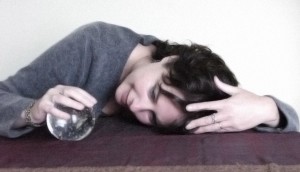 “Songs that sparkle and songs that evoke a powerful sense of place and often both things combined in the same song. I’m fascinated by melancholy and rapture in song and the way the two play with each other. A lot of this music is fairly new to me, music I fell in love with once I’d finished my own album, but there are some old friends here too, artists who have had and still have a profound effect on me, both as a listener and a writer. Hope you enjoy this sparkling sound-trip.”
“Songs that sparkle and songs that evoke a powerful sense of place and often both things combined in the same song. I’m fascinated by melancholy and rapture in song and the way the two play with each other. A lot of this music is fairly new to me, music I fell in love with once I’d finished my own album, but there are some old friends here too, artists who have had and still have a profound effect on me, both as a listener and a writer. Hope you enjoy this sparkling sound-trip.”
“The Sparkling Ground” A MixTape by Chloe March by Hidden Shoal on Mixcloud
